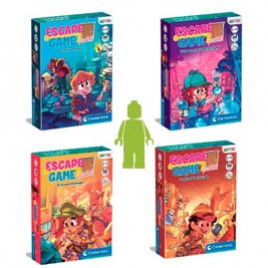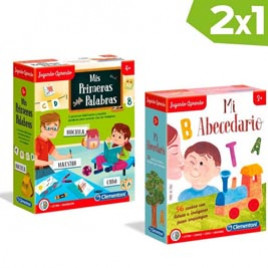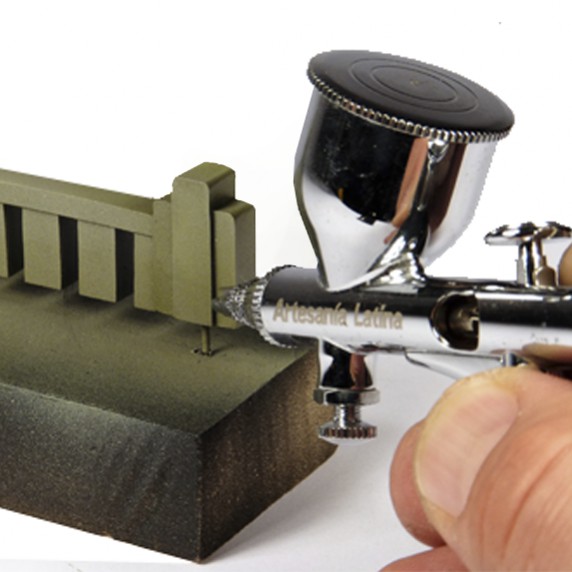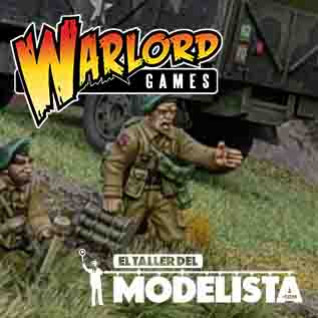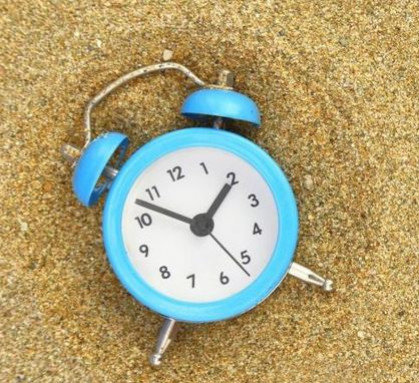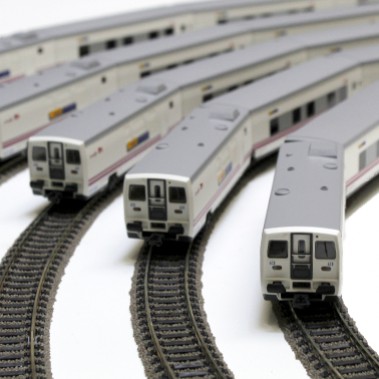After the post ”Railway Modelling step by step: Introduction”, in which we are giving you some advices to start in this amazing world, we keep going a bit further and explain some basics that every modeller have to consider.
Choosing the right scale.
Probably the first and most important decision that a train modelling begginer have to take is the scale choosing. This is a decision that will set the future of our hobby, because it doesn’t allow to reverse without giving up to big part of the materials purchased initially.
First of all, we have to understand the scale concept, that is just a mathematic relation between and object and its version in any kind of material. It is shown in way of relation in which the fist number indicates the size of the version and the second number indicates the real size (scale 1:1). For example, a 1:100 model indicates that one centimeter in the version equals to one hundred centimeters from the original one.
In railway modelling, we use different scales in the industrial level. Some of them are historic scales that have been linked with the trains from many decades ago, others are new creations in order to adapt to the new needs of the market. The most popular scales are:


The scale choosing will be determitated by an objective factor (space available) and a subjective factor (personal preferences). As we mentioned before, the most popular scales are N scale (1:160) and H0 Scale (1:87), reason why we focus on them. Lets see some considerations about them:
- H0 Scale is almost double size than N scale, so the same project in this scale will take four times more space than an N scale project.
- The biggest amount of materials (trains, buildings, vehicles, accesories…) is on H0 Scale. We can consider it the queen scale.
- H0 Scale allows highest level of details in the models (logical, isn’t it?), but it also needs it (H0 Scale requires highest level of detailing if you want to get a realistic model).
- The changing from a scale to the other involves giving up to the most part of the available materials in that moment… That means that the scale election is a decision tha we must take consciously.
Feeding system.
About the system, it is determinated first of all by the way the electric trains take the electricity from the rail. Normally, the electic trains can work in three different ways:
- With batteries: Nowadays we can consider them trains for children in most cases, so they are out of this analysis.
- Two Rails (or DC): The trains get the current through the axle in direct contact with the rails. Each rail drives a pole (positive or negative). This implies that the rails have to be always separated physically between them and the two wheels from a same axle have to be isolated (if not, we will have a short circuit). Historically, the direct current has been used to make the trains work, that is why it is known as DC system.
- Three rails (or AC): The trains take one of the poles through the rails, and the other one from a third central rail. It is needed, in this case, a central current take system, normally called “pickup shoe”. The axles don’t need to be isolated and the rails can cross without problems.

Both systems (DC & AC) have always had great followers and detractors. What is unquestionable is that the time has end up impossing a truth, nowadays the most extended system is the DC. In fact, some brands that used to make both systems, finally quited making models for the AC system (for example, Electrotren did it on 2018), leaving Märklin as the great AC system brand. Our advice, for someone that is starting from zero, is start with the DC system, that will be the one we exlain in our blog, althought it is almost always extrapolable to the AC system too.
Driving System.
About the control system we are going to use in our scale trains, the decission depends to Analog (DC in two rails system) or Digital (DCC in two rails system).
Analog system is the oldest one, in this system we control the trains with a voltage regulator, that makes increase its speed when you send more voltage to the rail. There is a pole running on each rail, and is the polarity what determinates the direction of the circulation. Every train that receive current through the rail will start moving, not being possible the independent control of each train. Additional fucntions (as illumination) will just be working with current on the rail (a stoped locomotive can not stay with the lights on).
Digital system was developed to overcome the limitations of the analog system, and thats why its possibilities are clearly superior. Every engine material needs a decoder installed that will receive the orders from the digital central through the rail, and it translates it in order to be able to control our model. This makes possible, first of all, the total and independent control of each locomotive, and then, the activation of light, sound, joining, smoking functions, etc. A digital model can also be controlated froma Smathphone, Tablet or computer, with the right devices and software.

We can deduce from this than the analog locomotives can’t work in a digital system, because they don’t have the decoder needed. Generally, any model, old or new, can be “digitalized”, installing a decoder on it, being common that the current locomotives have a standard interface for a quick decoder installation; we can say that they have digital preinstallation.
Digital locomotives can work on analog systems, and the most part of the decoders allow to modullate different parameters.
We can also highlight, that rails are common for both systems, so we can make our analog circiut become digital just changing the electric regulator for a digital central.
When a modeller fronts the decision of the system, you will have to question yourself how far you want to go. There are many modellers than just want a simple circuit, for example, just to get the first steps in this hooby and to know more about it. In this case, an analog starting set will be more economic than a digital one, including the rails, a regulator, and a composition of locomotives and wagons. It is, without any doubt, a great option in the cases where the “fear” of not using it worries you. On the other side, if someone is absolutely sure to get started permanently in the railway modelling, a digital set will be the best option, because its “playability” is totally bigger.
In any of the cases, if you choose the analog option, you have to be conscious that you will be autolimiting in the playing posibilities.









